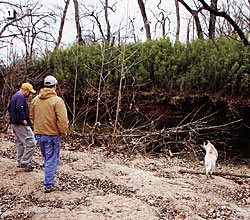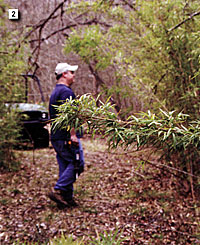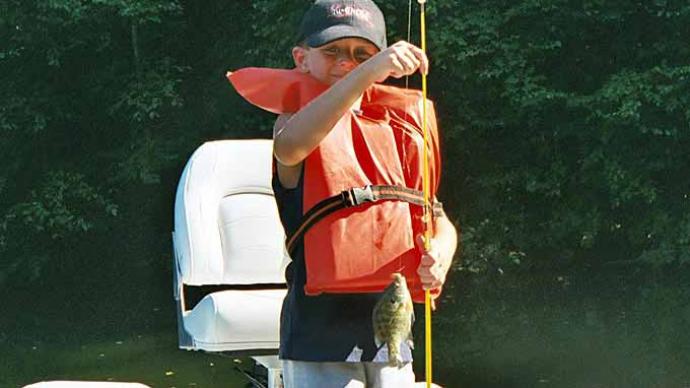
Bass anglers love to catch sunfish, so it's appropriate to travel back in time to our youth and make a cane fishing pole. Sure, we can buy one at the local bait shop, but why not take the time and build one ourselves?
I just happened to tag along with pond builder extraordinaire Mike Otto in early March to meet up with Pond Boss subscriber Eddie Pyeatt. Several years ago, Eddie enlisted my services to help renovate a three-acre pond in southern Oklahoma. A pristine, spring-fed stream borders his property with beautiful, clear water with a greenish tint. Smallmouth bass abound in the pools of the creek. The rest of the property is mixed hardwoods, mostly oak, with some hickory and scattered cedar.
There's also a smattering of river cane. My antennae rose.
"Hey, Eddie, have you made fishing poles out of that cane?"
"Yep, I have."
"Let's see."
We drove around to his workshop, pulled the door back, and showed me two fishing poles he had made for his kids. Straight, lacquered, tipped, and tied up. Good-looking cane poles.

I had to do that, too. My kids are grown, but those little grand peeps aren't. Eddie smiled. He was reading my mind. So, we did what two grown men do on a Saturday afternoon. After Otto teamed up with a backhoe operator to dig test holes to figure out if Eddie could have another pond, he and I shrugged, left dirt guys to do what dirt guys do, and headed to the canebrake. Eddie has a cool battery-powered saw and makes his way into the mass of greenery. He was shopping. The canes he selected must be straight, have a big base but not too big, and be long. Really long.
Over the next 20 minutes, Eddie cut enough cane to camouflage a small house. We strapped it to the top of his Mule and headed back to headquarters. By that time, Otto and our buddy, TJ Hudson, were visiting from Lincoln. Nebraska had disappeared... headed to another job nearby with the backhoe guy.
Eddie and I taped the bundle of about 20 canes together and strapped them into the back of Otto's Chevy pickup. They were sticking over the tailgate about six feet.
When we met up with Otto about an hour later, he shook his head. He didn't even ask.
This fresh-cut cane needed to hang. That's what my grandfather taught me. Eddie's grandpa taught him the same. They told us the cane would dry straight if we hung it upside down. So, we did.
I needed to write this article, so I plucked one from the hanging bundle, stripped the leaves, and cut it to 9 feet long. Why 9 feet? I have no idea... well, maybe a small idea. I think a long pole will reach those bluegill holes from the shore or the dock.

Here's what we did. I bought a rod tip from the tackle shop. Look at the diameter of the rod tip. Very important. Cut your cane pole at the diameter where the pole will barely slide into the tip. Then, follow the directions and glue the tip on the end.
Then, cut the pole to the length you want. Here's how to decide what length. Where will you plan to keep it? Mine will be hanging on the garage wall, so I can have it over 10 feet if we want. But, you want the kids to be able to use it, so long isn't necessarily good. Shorter kids, shorter poles. It does take a little kid some skill to raise the rod and toss the line to the best fishing spot.
When you are at the tackle store, buy a cane pole line kit. You'll recognize it immediately. It's a piece of cardboard with line wound around it, a crappie hook, and a bobber.
Here's where it gets tricky. First, thread the line through the eye at the end of the rod, bring it two-thirds of the way down the pole, and tie it to the pole. Tie it tight. Next, measure the line from the eye at the end of the rod and make it precisely the same length as the cane pole. That way, you can raise the pole and pitch the line without it being in your way.
Add the bobber ... I like it about 18" from the hook ... tie on a bream hook, grab some crickets, red wigglers, or nightcrawlers and your favorite grandkids, and go catch some sunfish.
Be sure to throw back the biggest bluegill and redear. It's okay to keep some of the next sizes down.
Oh, one other important thing. After getting the rod tip, seal the cane pole with shellac, lacquer, or polyurethane. It shines the pole up nicely and helps preserve its life.
You now have an heirloom.
Eddie Pyeatt does, too.




